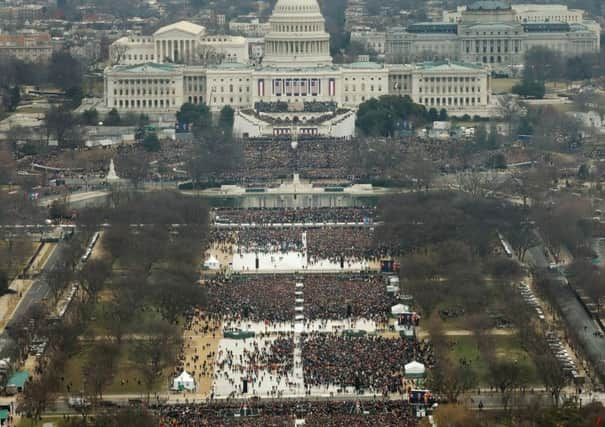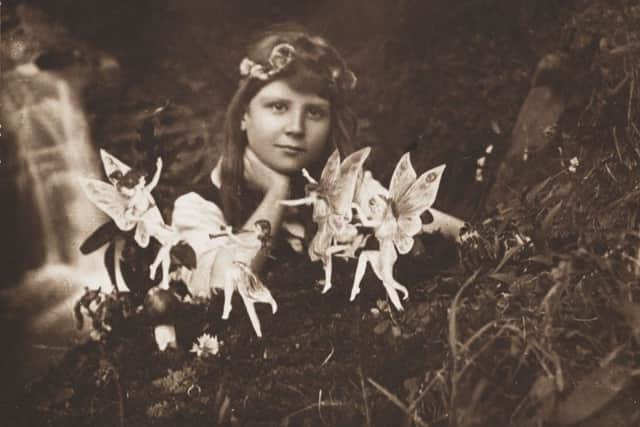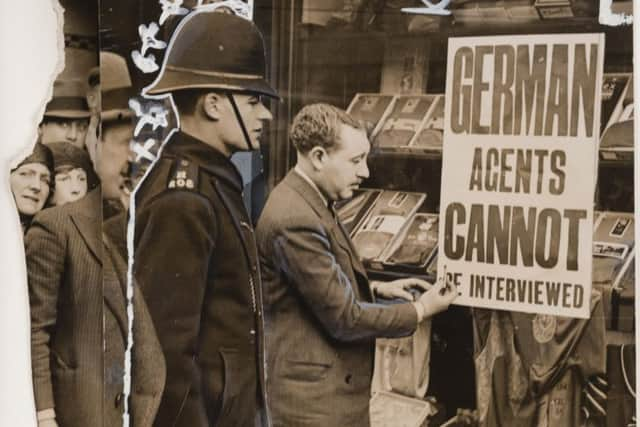Titanic safe... and other '˜fake news' they trumped up earlier


The president, whose frequent use of the term to describe any coverage he does not like has seen it named Word of the Year by the Collins Dictionary, was fond of overstating the numbers who watched his inauguration ceremony on Washington’s Capitol Mall, despite photographic evidence to the contrary.
But it has now emerged that someone with a paintbrush and a similarly exaggerated approach to story-telling used the same tactic 84 years earlier.
Advertisement
Hide AdAdvertisement
Hide AdThe original artwork has been plucked from the Daily Herald archive for an exhibition in Bradford that tells the “real” story behind fake news.


It was in 1933 that bus drivers and conductors staged a walkout during a dispute with London Transport whose origins are lost in the mists of time.
The left-wing Herald, which ceased publication in 1964, sent a photographer to the depot and chose a shot showing about 11 uniformed workers manning the picket line. But a casual glance at the picture makes it look much busier - and only a sharp eye can spot that the serried ranks of peaked caps behind the front line have been drawn in.
Another Herald picture from the period shows a policeman watching over a shopkeeper posting a notice in his window advising that “German agents cannot be interviewed”. A closer inspection reveals that the PC has been cut out from elsewhere in the picture and glued in place.
Advertisement
Hide AdAdvertisement
Hide AdThe deceptions would have been invisible to readers, given the low printing resolution of the time. However, the facts may have been less black-and-white than the pictures, one of the curators at the National Science and Media Museum pointed out.


“We don’t know if there were only 11 bus conductors there - we just know that the picture editor deemed that the photograph didn’t tell the story they were trying to tell,” said John O’Shea, who has put together the exhibition in Bradford.
“It could well be that the angle of the photograph just didn’t show the crowd as it really was,”
He added: “The Daily Herald is by no means the only culprit, but what we’re showing is the slippery slope where you might crop an image because there’s something irrelevant in the frame, or change the background because it’s distracting.
Advertisement
Hide AdAdvertisement
Hide Ad“Every story is constructed and this demonstrates that you should never put all your stock in one source of information. If something is important it needs to be corroborated and seen in perspective.”


The Bradford museum holds around 3m images from the Herald’s library, but its fake news exhibition traces the phenomenon back even further, to a celebrated photograph taken 100 years ago in Cottingley, near Bingley, which of appears to show fairies playing in a garden.
It was intended as a practical joke, but the picture came eventually to the attention of the author and spiritualist Sir Arthur Conan Doyle, who used it as evidence of the existence of the creatures, in an article he wrote for The Strand magazine.
Mr O’Shea said: “He wanted to believe in the existence of the supernatural - and who doesn’t want to believe in fairies?
Advertisement
Hide AdAdvertisement
Hide Ad“In those days it took perhaps four or five years for the story to circulate to the national papers. Now, with social media, it happens in minutes.”


Fake news has gained traction because it is now “economically rewarding”, he added.
“There are several reasons why it is happening right now and one is that advertising can be embedded in stories,” Mr O’Shea said.
“That’s why there are now whole industries generating false stories, which can gain traction quickly because it’s easy for people to use social media to share something that fits with their view of the world.”
Advertisement
Hide AdAdvertisement
Hide AdThe exhibition also covers infamous “fakes” that were thought correct at the time, including a front page of the Denver Times reporting that the stricken Titanic was being towed safely into harbour.
The issue dated April 15, 1912, reported, based on information then believed to be correct, that 2,000 people had been rescued from the ship, which, it said, had been held afloat by its water-tight compartments and was being towed towards Halifax, Nova Scotia.
It emerged shortly afterwards that 1,503 people had died as the ship sunk, with only 706 survivors among the passengers and crew.